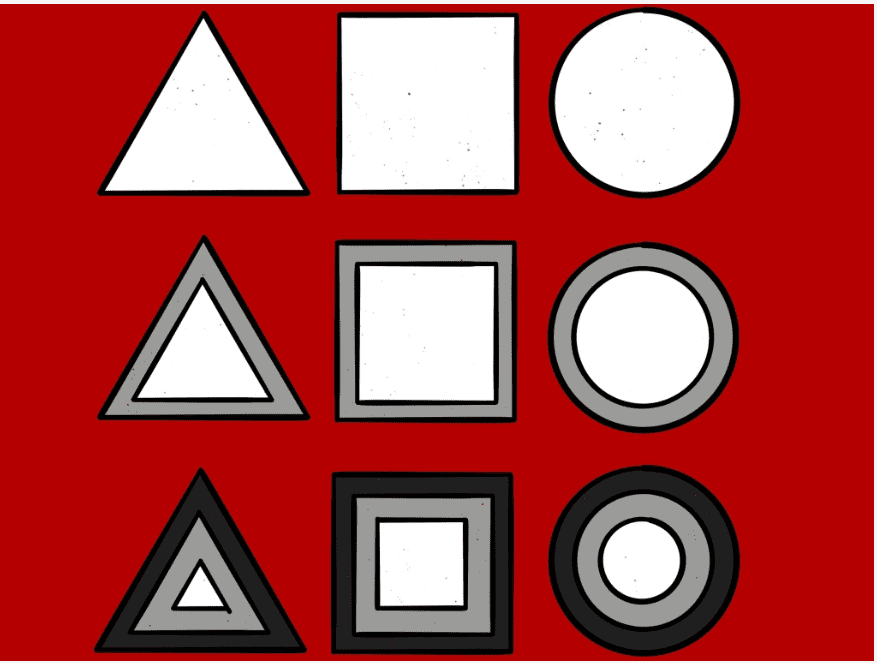I dislike the guiding principles of ‘broad‘ and ‘balanced‘ when it comes to thinking about the PE curriculum and the selection of activities and sports within it. They are vague, they don’t help the design process and they don’t really apply to an individual subject but to a school curriculum (for a nice critical perspective read Colin Richard’s Impact magazine article Broad? Balanced? Curriculum?). However in attempting to remove these principles from people’s thinking I have been met with strong resistance. They are (in PE Departments in England) a sticky concept that has created inertia to more contemporary ways of thinking about PE curriculum design and activity selection. Rather than advocating for binning them, perhaps a better starting point is to consider other options of ‘breadth and balance’ beyond the dominant ideas a range of sports or ensuring each activity area is accounted for.
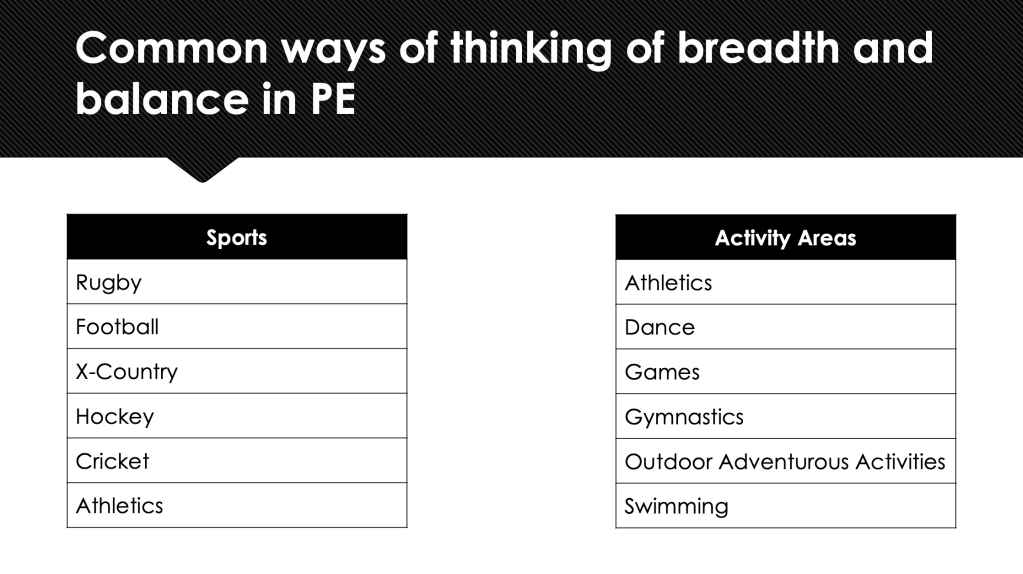
If achieving ‘breadth and balance’ is a key concern when designing your PE curriculum and what activities should be included there are a number of other options that could guide your decision making rather than the dominant ways:
- Forms of Movement
- Basic Movement Skills
- Classification of Games and Sports
- Logics of Practice
Forms of Movement (from Implications for Promoting Physical Literacy)
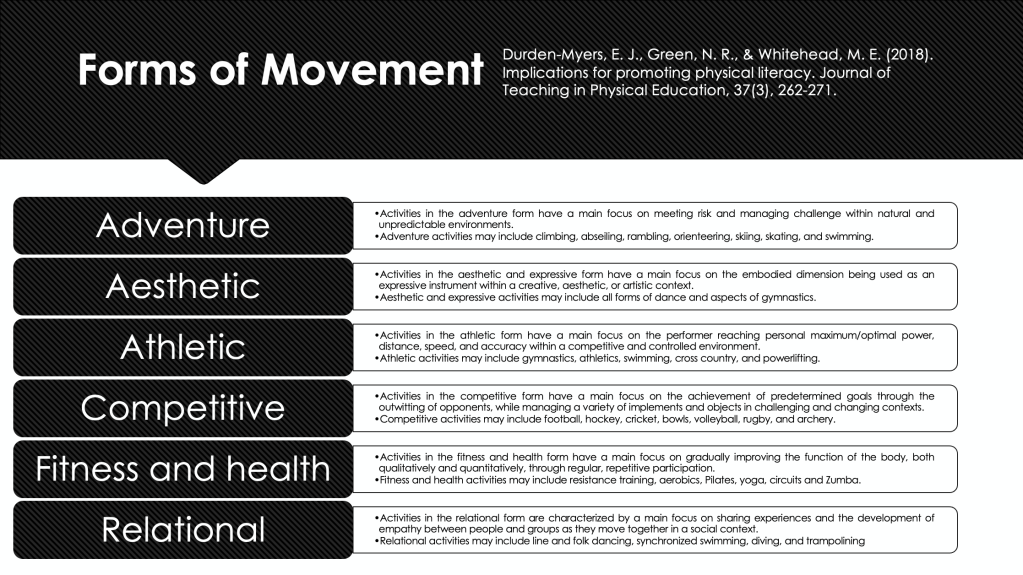
It is recommended that four principles need to be considered when designing a physical literacy informed PE curriculum; 1) a wide range of activities 2) sufficient time given for meaningful learning to take place 3) autonomy supportive environment with opportunities of choice and 4) extension of involvement in activity through extracurricular provision. The range of activities proposed to support Principle 1 is shown in the graphic above. Participation in each movement form provides a unique opportunity for moving, learning and developing physical literacy as they each have a distinctive essence. That essence includes the particular situation, physical environment, social relationships and specific demands of competence when participating.
Basic Movement Skills (from Athletics Skills Model)
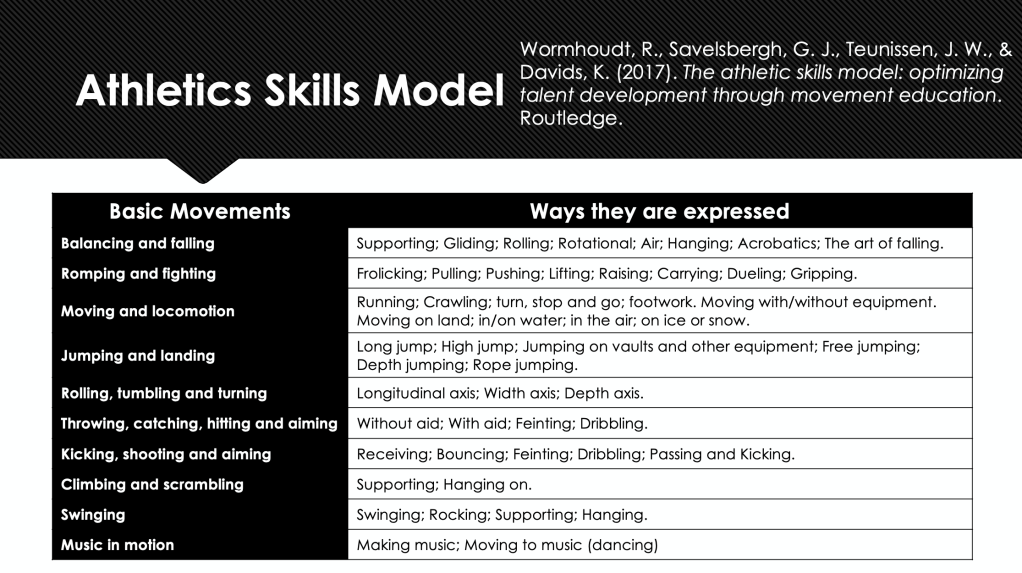
The Athletics Skills Model is an evidence informed framework that helps to nurture versatile movers in a structured way. The benefits of being a versatile mover are numerous, including reduced injury, reduced drop out of organised physical activity, reduced burnout, increased enjoyment and performance. An underpinning part of the framework are the Basic Movement Skills. Breadth and balance could be achieved through the full range of basic movements instead of types of activities. Simply by analysing your curriculum you can see where certain movements are over emphasised and others not addressed at all (for example the art of falling which is very important) and adapt accordingly, through the use of multisports and donor sports.
Classification of games and sports (from Rethinking the classification of games and sports in physical education: a response to changes in sport and participation)
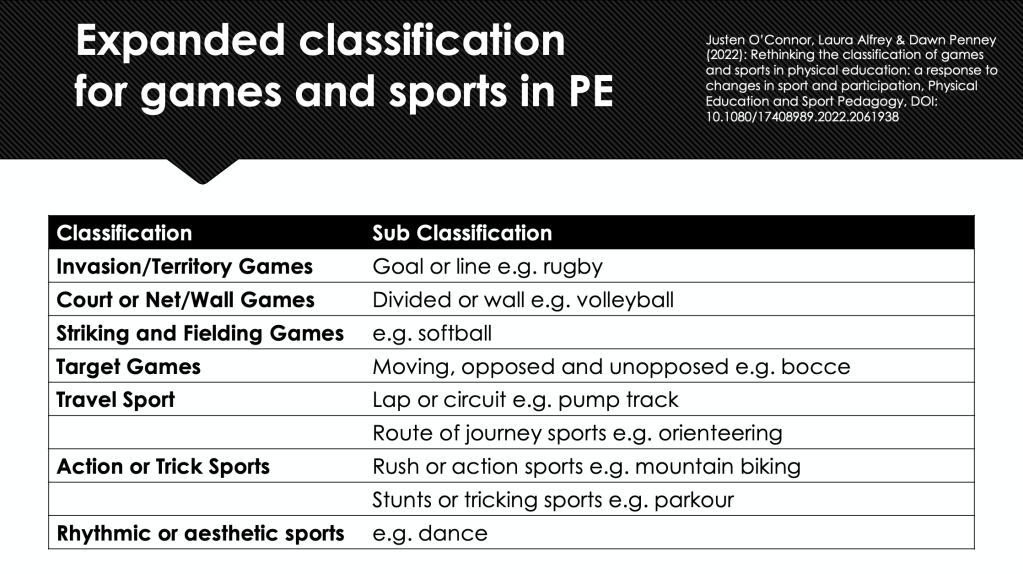
This recent expanded classification broadens Len Almond’s original work on games categories by adding five more types: lap or circuit sports, route or journey sports, rush or action sports, stunts or tricking sports and rhythmic or aesthetic sports. Many of these activities could be considered lifestyle sports (with emphasis on location, equipment, endurance, risk and alternative image – such as skateboarding) or informal participation sports which both more children and adults are taking up in favour of more traditional options. However this is not just a simple appeal to novelty within the curriculum but thinking more broadly and holistically about tactics and strategies and the participation and performance ends they can contribute to.
Logics of Practice (from Who is physically active? Cultural capital and sports participation from adolescence to middle age—a 38-year follow-up study and Logics of practice in movement culture: Lars-Magnus Engström’s contribution to understanding participation in movement cultures)
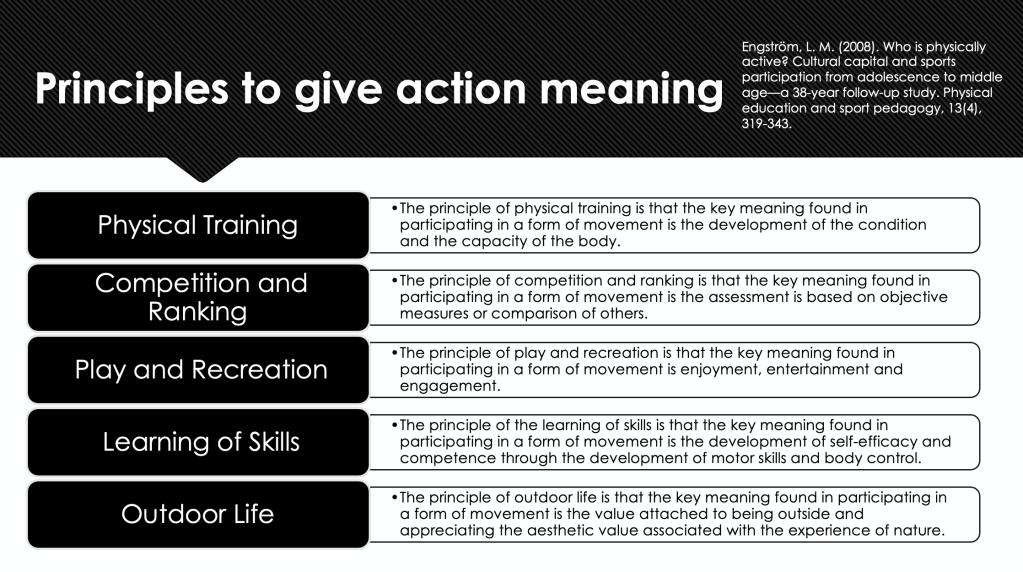
There are many ways to attempt to understand how people with different dispositions devote themselves to participating in movement culture and different activities. One such method is Bourdieu’s concept of the “logics of practice”. Simply put these different logics of practice can provide different meanings which can be found when participating in physical activities and sports. Rather than thinking about breadth and balance of sports provided in a curriculum, we can look to offer children the opportunity to explore and experience the full range of potential meanings found in movement culture (or a combination of meanings simultaneously).
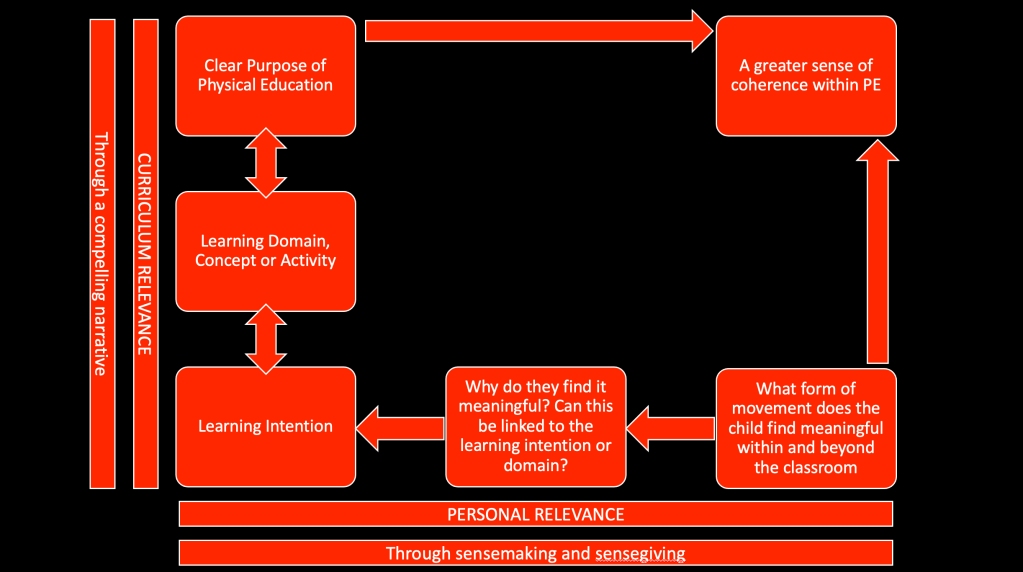
A key purpose of a curriculum is to provide coherence to the children being taught, so they understand why they are there, what they are learning and how that might be relevant in their lives. This means having sound educational reasons and answers for the activities being selected and taught. I’m not convinced that ‘breadth’ or ‘balance’ by themselves are helpful guiding principles for designing a PE curriculum that does that well. However, the four alternatives offered do attempt to provide a more coherent rationale – 1) promote physical literacy through forms of movement, 2) develop versatile movers through competence of basic movements skills 3) understand tactics and strategies that can lead to participation and performance outcomes and 4) explore a range of meanings that can be found within movement cultures. Each of these provide a more coherent answer to what breadth and balance is in the PE curriculum and importantly they offer a sound justification to the question ‘why are we doing this activity?’

